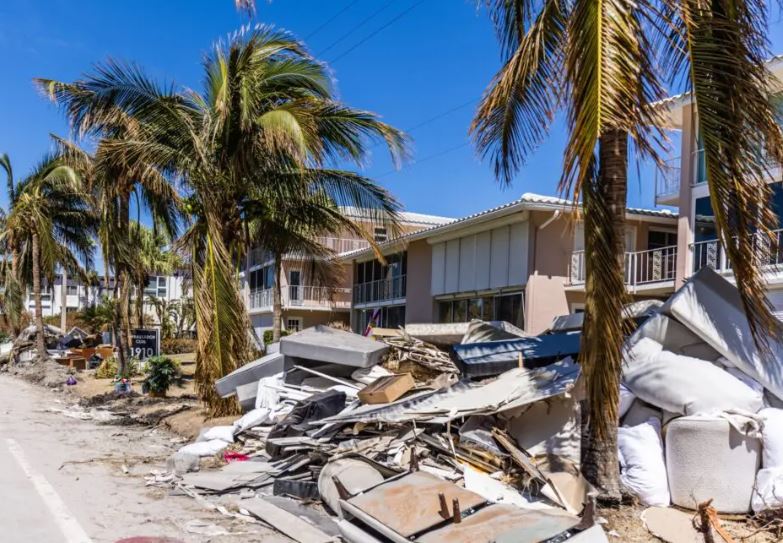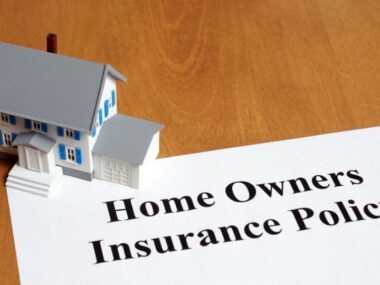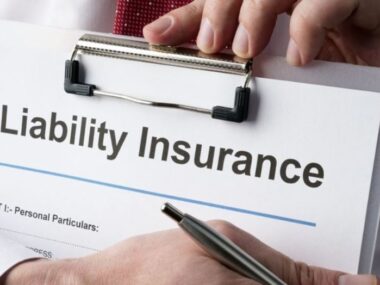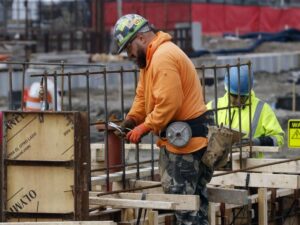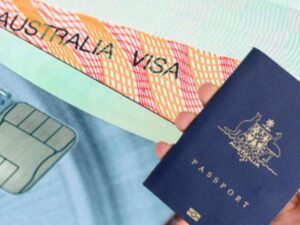Mother Nature can be a force of incredible beauty, but she also possesses a raw, unpredictable power. From the raging winds of hurricanes to the tremors of earthquakes and the relentless surge of floods, natural disasters can strike with devastating force, leaving behind a trail of destruction in their wake.
For homeowners and businesses alike, the threat of these events casts a long shadow. The financial and emotional toll of property damage can be immense, leaving individuals and families facing a daunting road to recovery.
But you don’t have to face these challenges alone. By understanding your risks and implementing a comprehensive insurance strategy, you can fortify your property against the unpredictable fury of nature. This guide will explore the crucial insurance coverages to protect your property from natural disasters, empowering you to make informed decisions and safeguard your most valuable assets.
We’ll delve into the intricacies of various insurance policies, discuss the importance of risk assessment, and provide valuable tips on how to choose the right coverage for your specific needs and circumstances.
Whether you reside in a coastal region facing the threat of hurricanes, an earthquake zone, or a flood-prone area, this guide will equip you with the knowledge you need to navigate the complex world of disaster insurance and build a resilient future for your property.
Understanding Natural Disaster Insurance
Natural disasters can strike unexpectedly, causing significant damage to your property. To safeguard your assets and peace of mind, it’s crucial to have the right insurance coverage in place. This section will provide a comprehensive overview of natural disaster insurance, exploring its key aspects and the different types of coverage available.
What is Natural Disaster Insurance?
Natural disaster insurance is a specialized type of coverage designed to compensate for losses incurred due to natural calamities. It typically covers damages caused by events such as:
- Hurricanes: Strong winds, heavy rainfall, and storm surges.
- Earthquakes: Shaking of the ground.
- Floods: Rising water levels.
- Tornadoes: Powerful windstorms.
- Fires: Caused by natural events like lightning strikes.
Types of Natural Disaster Insurance
Natural disasters can strike unexpectedly, causing significant damage to your property. To safeguard your assets and peace of mind, it’s crucial to have the right insurance coverage in place. This section will delve deeper into the various types of natural disaster insurance available, providing you with a comprehensive understanding of their benefits and limitations.
-
Homeowners Insurance
- Foundation: Most homeowners policies include coverage for natural disasters, such as hurricanes, tornadoes, and hailstorms.
- Limitations: However, it’s essential to review your policy for specific limitations and exclusions. Some policies may have deductibles or coverage limits that vary based on the type of disaster. Additionally, certain natural disasters, such as earthquakes and floods, may require separate coverage.
- Additional Considerations: Some homeowners policies also offer coverage for losses due to business interruption, if your home is rendered uninhabitable due to a natural disaster.
-
Flood Insurance
- Essential Coverage: Flood damage is often excluded from standard homeowners policies. To protect your property from flooding, you’ll need to purchase separate flood insurance.
- Federal Coverage: Flood insurance is available through the Federal Emergency Management Agency (FEMA).
- Risk Assessment: FEMA provides flood maps that identify areas at high risk of flooding. This information can help you determine if you need flood insurance.
- Coverage Options: Flood insurance policies typically cover the cost of rebuilding your home and replacing your belongings, up to a certain limit. However, it’s important to note that flood insurance coverage may not extend to damage caused by groundwater or seepage.
-
Earthquake Insurance
- Seismic Protection: If you live in an earthquake-prone region, earthquake insurance can provide financial protection against damage caused by seismic activity.
- Additional Coverage: Some earthquake insurance policies also cover damage caused by fire or landslides that follow an earthquake.
- Cost: Earthquake insurance is typically more expensive than other types of property insurance due to the potential for catastrophic damage.
- Policy Limits: Earthquake insurance policies often have lower coverage limits compared to homeowners insurance. It’s important to carefully review your policy to ensure it provides adequate coverage for your needs.
-
Business Interruption Insurance
- Operational Continuity: If your business is affected by a natural disaster, business interruption insurance can help cover lost income and expenses incurred while your operations are disrupted.
- Essential Coverage: This type of insurance can cover costs such as rent, payroll, and utility bills during the period of recovery.
- Additional Considerations: Business interruption insurance may also cover the cost of renting temporary facilities or purchasing replacement equipment if your property is damaged.
Choosing the right natural disaster insurance coverage depends on your specific needs and the risks you face. It’s important to review your policy regularly to ensure it remains up-to-date and provides the coverage you require. Additionally, consider consulting with an insurance professional who can help you assess your risk and recommend appropriate coverage options.
Top Providers of Natural Disaster Insurance
When it comes to protecting your property from the devastating effects of natural disasters, having the right insurance coverage is essential. A reliable insurance provider can offer peace of mind and financial security during times of crisis. Here are 8 top providers of natural disaster insurance that you may consider:
-
Allstate
Allstate is a well-known insurance company that offers a variety of natural disaster coverage options, including homeowners, renters, and flood insurance. They have a strong reputation for customer service and efficient claims processing. Allstate is particularly known for its customizable policies, allowing you to tailor your coverage to your specific needs.
-
State Farm
State Farm is another leading insurance provider that offers comprehensive natural disaster coverage. They are known for their extensive agent network and personalized service. State Farm’s agents can help you understand your coverage options and provide tailored advice based on your unique circumstances.
-
Farmers Insurance
Farmers Insurance provides a wide range of insurance products, including homeowners and flood insurance. They have a strong focus on customer satisfaction and offer competitive rates. Farmers Insurance is known for its commitment to community involvement and disaster relief efforts.
-
Nationwide
Nationwide is a mutual insurance company that offers a variety of natural disaster coverage options. They have a strong financial rating and are committed to providing exceptional customer service. Nationwide is particularly known for its innovative products, such as their disaster preparedness tools and resources.
-
Progressive
Progressive is a leading auto insurance company that also offers homeowners and flood insurance. They are known for their innovative products and competitive pricing. Progressive offers a variety of discounts and rewards programs, making it a cost-effective option for many policyholders.
-
USAA
USAA is a member-owned insurance company that specializes in serving military members and their families. They offer a variety of natural disaster coverage options and are known for their excellent customer service. USAA is committed to providing exceptional service to its members and has a strong track record of supporting military families during times of need.
-
Travelers
Travelers is a large insurance company that offers a wide range of products, including homeowners and flood insurance. They have a strong financial rating and a commitment to customer satisfaction. Travelers offers a variety of coverage options and has a reputation for providing timely and efficient claims processing.
-
Liberty Mutual
Liberty Mutual is a well-known insurance company that offers a variety of natural disaster coverage options. They are known for their competitive pricing and excellent customer service. Liberty Mutual offers a variety of discounts and rewards programs, making it a cost-effective option for many policyholders.
When choosing a natural disaster insurance provider, it’s important to consider factors such as:
- Coverage options: Ensure the provider offers the specific coverage you need, such as homeowners, flood, or earthquake insurance.
- Financial stability: Look for a provider with a strong financial rating to ensure they can pay claims in the event of a disaster.
- Customer service: Read reviews and testimonials to get a sense of the provider’s customer service reputation.
- Pricing: Compare quotes from different providers to find the most affordable option for your needs.
- Additional features: Consider factors such as discounts, rewards programs, and disaster preparedness resources when making your decision.
By carefully considering these factors, you can select a reliable insurance provider that will protect your property and provide peace of mind during times of natural disaster.
How much does Natural Disaster Insurance Cost
The cost of natural disaster insurance can vary significantly based on several factors, including:
- Location: Areas with a higher risk of natural disasters, such as coastal regions or earthquake zones, will generally have higher premiums.
- Type of coverage: The specific types of natural disasters you want to be covered for will influence the cost. For example, flood insurance is often more expensive than coverage for windstorms or hail.
- Policy limits: The amount of coverage you choose will affect your premium. Higher limits typically result in higher costs.
- Deductibles: A higher deductible can lower your premium, but it also means you’ll have to pay more out-of-pocket in the event of a claim.
- Insurance company: Different insurance companies may offer varying rates for the same coverage. It’s important to compare quotes from multiple providers to find the most affordable option.
- Discounts: Some insurance companies may offer discounts for factors such as having a good driving record, installing security systems, or being a member of certain organizations.
- Age of your home: Older homes may require more extensive repairs or replacements after a natural disaster, which can lead to higher insurance premiums.
- Construction materials: The type of materials used to build your home can also affect your insurance costs. Homes built with more durable materials may have lower premiums.
- Policy history: If you have a history of insurance claims, your premiums may be higher.
To get a more accurate estimate of the cost of natural disaster insurance, it’s recommended to contact multiple insurance providers and request quotes. Be sure to provide them with your specific needs and preferences so they can tailor their quotes accordingly.
Here are some additional tips for saving money on natural disaster insurance:
- Bundle your policies: If you purchase multiple types of insurance from the same company, you may be eligible for discounts.
- Increase your deductible: A higher deductible can lower your premium, but be sure to choose a deductible that you can comfortably afford.
- Shop around: Compare quotes from different insurance providers to find the best deal.
- Consider government programs: In some cases, government programs may offer subsidized or discounted insurance coverage.
- Invest in preventative measures: Taking steps to mitigate the risk of natural disasters can help lower your insurance premiums. For example, you could install storm shutters, reinforce your roof, or elevate your home to reduce flood risk.
While the cost of natural disaster insurance may seem high, the potential financial losses from a disaster can be far greater. Investing in adequate coverage can provide peace of mind and protect your assets during times of crisis.
Key Considerations for Natural Disaster Insurance
When choosing natural disaster insurance, it’s important to consider several key factors to ensure you have adequate coverage and a plan in place to protect your property and financial well-being. Here are some essential considerations:
-
Policy Limits and Deductibles
- Policy Limits: Ensure your policy limits are sufficient to cover the full cost of rebuilding your property and replacing your belongings. This includes considering factors such as the construction materials used, the size of your home, and the value of your personal possessions.
- Deductibles: Understand your deductible and be prepared to pay this amount out-of-pocket before your insurance coverage kicks in. Higher deductibles can often lead to lower premiums, but it’s important to choose a deductible that you can comfortably afford.
-
Riders and Endorsements
- Additional Coverage: Consider adding riders or endorsements to your policy for specific coverage needs, such as coverage for valuable items, additional structures on your property, or coverage for losses due to business interruption.
-
Insurance Premiums
- Cost Factors: Natural disaster insurance premiums can vary significantly based on factors such as your location, the type of coverage you need, and the deductible you choose.
- Comparison Shopping: It’s important to compare quotes from multiple insurers to find the most affordable and comprehensive policy for your needs.
-
Insurance Claims Process
- Familiarity: Familiarize yourself with your insurance company’s claims process to ensure a smooth experience in the event of a disaster. This may involve documenting damages, providing necessary paperwork, and cooperating with adjusters.
-
Government Programs
- Assistance: In some cases, government programs may offer subsidized or discounted insurance coverage, especially for low-income individuals or those living in high-risk areas.
-
Preventative Measures
- Mitigation: Investing in preventative measures can help lower your insurance premiums and reduce the risk of damage. For example, you could install storm shutters, reinforce your roof, or elevate your home to reduce flood risk.
-
Professional Advice
- Consultation: Consider consulting with an insurance professional who can help you assess your risk, recommend appropriate coverage options, and ensure you have a comprehensive insurance plan in place.
By carefully considering these factors and taking proactive steps to protect your property, you can increase your resilience to natural disasters and minimize the financial impact of such events.
Frequently Asked Questions (FAQs)
Q: What types of natural disasters are typically covered by homeowners insurance?
A: Standard homeowners insurance policies generally cover damage from fire, wind, hail, and certain other perils. However, coverage for specific natural disasters like floods, earthquakes, and hurricanes often requires additional endorsements or separate policies.
Q: Do I need flood insurance if I live in a high-risk area?
A: Yes, absolutely. Flood insurance is crucial, especially if you live in a flood-prone area. Standard homeowners insurance typically does not cover flood damage. You can obtain flood insurance through the National Flood Insurance Program (NFIP) or private insurers.
Q: Is earthquake insurance necessary?
A: If you live in an earthquake-prone region, earthquake insurance is highly recommended. It’s typically available as an endorsement to your homeowners policy.
Q: What is “actual cash value” vs. “replacement cost” coverage?
A: Actual Cash Value (ACV): Pays for the cost of replacing your damaged property minus depreciation. This means you’ll receive less than it would cost to replace the item with a brand-new one.
Replacement Cost Coverage: Pays for the full cost of replacing your damaged property with a new, similar item, without deducting for depreciation. This is generally more expensive but provides better protection.
Q: Does my homeowners insurance cover damage to personal belongings?
A: Yes, most homeowners insurance policies cover damage to your personal belongings, such as furniture, electronics, clothing, and jewelry. However, there may be limits on the amount of coverage for certain items, and some items may require specific endorsements for full coverage.
Q: What is “loss of use” coverage?
A: Loss of use coverage, also known as “additional living expenses” coverage, helps cover the costs of living elsewhere while your home is being repaired after a covered disaster. This may include expenses such as hotel stays, rental housing, and dining out.
This information is for general guidance only and should not be considered professional insurance advice. Please consult with a qualified insurance agent for personalized recommendations and coverage options.
Conclusion
By understanding the different types of insurance coverage available and tailoring your policy to your specific needs, you can protect your property from the devastating effects of natural disasters. Remember to review your policy regularly to ensure it remains up-to-date and provides the coverage you require. Additionally, consider consulting with an insurance professional who can help you assess your risk and recommend appropriate coverage options.
